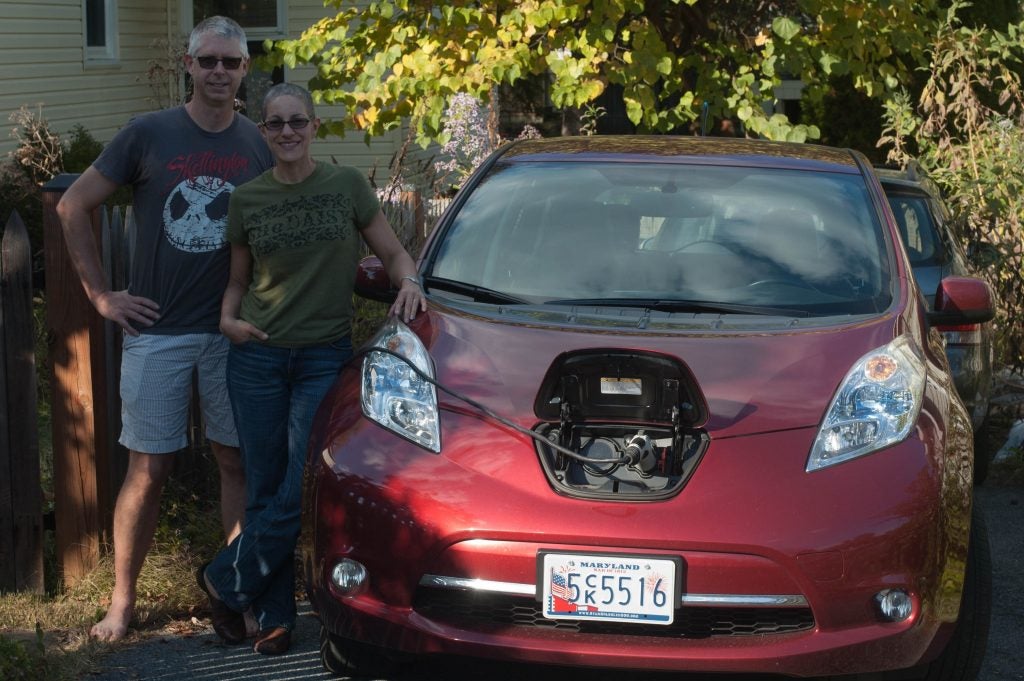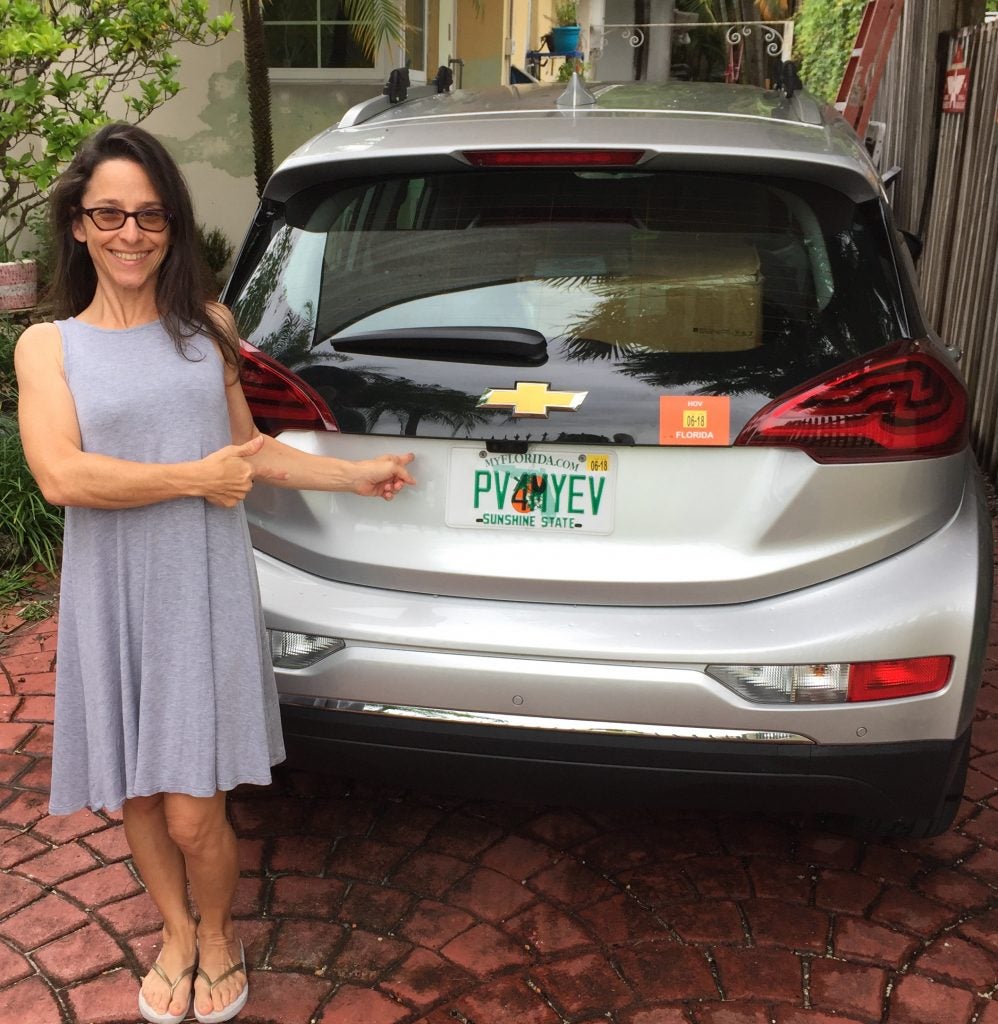Solar and electric vehicles
Solar + Electric Vehicles = A Great Combo
For solar owners, fueling your electric vehicle (EV) with homegrown energy is especially compelling. EVs are lower maintenance options and are quickly becoming as affordable as internal combustion engine cars.
America’s EV adoption rate is quickly rising as a wider variety of models with longer ranges are coming to market. The 2022 Inflation Reduction Act extended and modified tax credits for EV purchases. If you would like to read more about the legislation and the changes please visit: Inflation Reduction Act 2022.

Incentives for buying an EV
There are Federal Tax credits for buying a qualifying EV and/or installing an EV charger. Depending on where you reside, you may also find state, local or utility incentives for EVs or EV Charging.
Federal Tax Credit for New Electric Vehicle Purchases (IRS Form 8936)
At the federal level, there are tax incentives of up to $7,500 for qualified Battery Electric Vehicles, Plug-in Hybrid Electric Vehicles, and Fuel Cell Electric Vehicles.
In addition to purchasing a qualified vehicle, you must meet certain criteria to be eligible for the tax incentives:
To qualify, you must:
- Buy it for your own use, not for resale
- Use it primarily in the United States
- In addition, your modified AGI (Adjusted Gross Income) may not exceed:
- $300,000 for married couples filing jointly
- $225,000 for heads of households
- $150,000 for all other filers
You can use your modified AGI from the year you take delivery of the vehicle or the year before, whichever is less. If your modified AGI is below the threshold in one of the two years, you can claim the credit.
The credit is nonrefundable, so you can’t get back more on the credit than you owe in taxes. You can’t apply any excess credit to future tax years.
General Requirements
To qualify, a vehicle must:
- Have a vehicle weight of less than 14,000 pounds
- Have a battery capacity of at least 7 kWh
- Be made by a qualified manufacturer.
- The vehicle must undergo final assembly in North America.
- The credit amount will depend on the vehicle meeting the critical minerals sourcing and battery components sourcing requirements.
- Sale qualifies only on new vehicle purchase
- The MSRP (Manufacturer Suggested Retail Price) excluding destination fees can’t exceed $80,000 for trucks, vans, or SUVs and $55,000 for other vehicles.
For an up-to-date list of specific vehicle credit eligibility, please visit: https://www.fueleconomy.gov/
Federal Tax Credit for Used Clean Vehicles (IRS Form 8936)
If you purchase a Battery Electric Vehicle, Plug-in Hybrid Electric Vehicle, or Fuel Cell Electric Vehicle in 2023 or after, there is a tax credit equal to 30% of the sale price up to a maximum of $4,000. This credit is non-refundable and can’t be spread out over multiple tax years.
To qualify for the Used Vehicle Federal Tax Incentive:
- A sale price of $25,000 or less and purchased from a dealer
- The model year must be at least 2 years earlier than the calendar year when you buy it.
- Not have already been transferred after August 16, 2022, to a qualified buyer
- A vehicle must have a weight of less than 14,000 pounds
- Have a battery capacity of at least 7 kWh
- Be for use primarily in the U.S.
- Must not be the original owner and can not be claimed as a dependent
- Individual must purchase for use and not for resale
- Not have claimed another used vehicle credit in the 3 years prior
- In addition, your modified AGI (Adjusted Gross Income) may not exceed:
- $150,000 for married couples filing jointly or a surviving spouse
- $112,500 for heads of households
- $75,000 for all other filers
You can use your modified AGI from the year you take delivery of the vehicle or the year before, whichever is less. If your modified AGI is below the threshold in one of the two years, you can claim the credit.
Alternative Fuel Vehicle Refueling Property Credit (i.e. EV Charging Credit)
Starting in 2023, qualifying property will be limited to property placed in service within low-income communities or non-urban census tracts. The federal government provides a 30% credit of the cost with a maximum amount of $1,000. The credit covers equipment and installation costs. The credit can be accessed using IRS Form 8911.
State EV Incentives
Electric vehicle-related incentives vary considerably across individual states. Some are rebates. Some are tax credits. Some vary by the type of electric vehicle. For information on incentives available in your state, visit: State Policies Promoting Hybrid and Electric Vehicles.
🌞 SUPPORT OUR WORK 🌞
Make a tax-deductible donation today to Solar United Neighbors to help more people go solar, join together, and fight for their energy rights.
EVs: A key part of a better energy system
Electric Vehicles can do more than get you where you need to go. They also can lead us to a more reliable and less expensive electric grid.
To understand why, let’s take a quick run-through of how our electric system works now. Large, centralized plants generate most of the electricity we consume. They ship this electricity long distances to our homes and workplaces.
There are several drawbacks to this system.
Those thousands of miles of wires and poles are expensive. They’re also fragile and prone to failing when bad weather hits.
Additionally, demand for electricity can vary widely from day to day and month to month. Meeting spikes in demand with a centralized system is expensive. This puts us at risk of brownouts and blackouts when the demand can’t be met.
Fortunately, this centralized system is changing. More and more people are powering their own homes and businesses with solar energy. This lowers the need to produce electricity in a centralized way.
So where do EVs come in? Think of an EV as a giant battery with wheels. Certain EVs with bi-directional capabilities can use them to store electricity for when demand is high. This reduces strain on the grid. It means better electricity reliability for everyone.
Many states are piloting programs to study EV owner behavior and learn how adding EVs will impact the grid. These pilot projects educate utilities, governments, and grid operators on EV customer behaviors. They also offer insights into rate design and infrastructure deployment to balance electricity loads and improve grid stability and reliability.
Learn how to charge your EV
EV chargers are classified into three categories: Level 1, Level 2, and DC Fast Charging. The categories are defined by:
- the power and rate at which they charge a vehicle, and
- the electric infrastructure required for installation and operation.
Download our guide to learn more
Our work
Solar United Neighbors sees Electric Vehicles as a logical next step for solar owners and we’re fighting for more EVs by supporting state and federal incentives, progressive pilot projects, and fair charging rates.

- In 2018, our Appalachian Ohio Solar Co-op included EV chargers for every house that went solar at no additional cost.
- We are currently running co-ops in multiple states that are bringing together homeowners and small businesses and giving participants the option of installing solar, a Level 2 Electric Vehicle charger, or both. Find out more details about our open co-ops on our co-ops page.
Solar + EV resources
- Green Car Reports – Drives and reviews all green cars.
- The Electric Vehicle Transportation Center (EVTC) – Designed to help create the nation’s electric vehicle transportation network.
- Plug-in America – An advocacy group that supports the expansion of plug-in vehicles.
- Sierra Club Go Electric – A national campaign to make your next car electric.
- Department of Energy Alternative Fuels Data Center – Offers primary research on electric vehicles.
- ChargePoint – The largest network of EV charging stations. They help you find a charging station near you.
- Solar and EV Sizing Guide – This is a guide that can help you figure out how much solar you may need to power your electric vehicle.
- IRS Clean Vehicle Tax Credit – This is the IRS page with information and guides to the current Electric Vehicle tax credit.
Learn more
We’ve compiled additional information about solar and electric vehicles in some states. Are you looking for information that isn’t covered here? Contact us.









